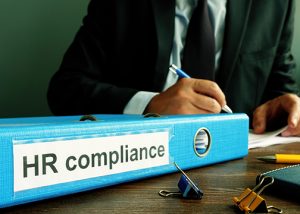“What’s going on with HR?” you ask. Well, frankly, a LOT.
Human Resources is a diverse collection of disciplines. We all love a succinct answer. In short, Human Resources includes anything that impacts the people working in and around the business and may even impact the vendors, clients, customers, and consultants to the company. But even that does not quite capture all that Human Resources is and does. So, to ask, “What’s going on with HR?” you can quickly see how expansive of a question that is. Rather than share all that is going on with HR, let us look at some current events occupying a lot of time, effort, and energy within Human Resources. While the industry, unique operations, organizational headcount, and revenue volume all impact the priorities of the HR function within each business, some commonalities have a high probability of being experienced by the largest number of HR functions across all industries, operations, headcounts, and revenue volumes.
Talent Acquisition

This is currently the most pressing issue facing businesses today. The sourcing, screening, interviewing, hiring, and onboarding of top talent to either grow the business, stabilize the business, or backfill positions vacated through voluntary or involuntary terminations is taking up an unbalanced and overwhelming amount of HR’s work today. The pandemic is a primary driver of the issue and not just because of the dangers to the health and even lives of the employee population. Many employees are resigning their positions not to go on unemployment or even to move to a competitor but instead because of their perception of how they were treated in the early stages of the pandemic when layoffs and closures happened; because of their perception of how they are being treated today with the controversies around masking, testing, and vaccinations; and because they have discovered during the layoffs in the early stages just what is important to them or the need and benefits of a better work/life balance; and so are leaving to go into different industries, open their own businesses, or into jobs they perceive will provide better opportunity to support themselves and their loved ones. Because of this, finding top talent and convincing them to join your organization is more challenging than ever before.
We are further seeing massive exits from the workforce. There have been significant drops in the labor participation rate. Many attributed this to the pandemic alone, and that is not the case. We have known since the early 2000’s that the baby boomer generation would eventually retire. Up until February 2020, it appeared they would continue working far longer than any other generation in the workforce, but the pandemic did have an effect in accelerating the exit of Baby Boomers from the workforce. They began to ask themselves, “Is this really what I want to deal with in the twilight of my life? Isn’t family more important? Shouldn’t I enjoy all that I have built, gained, and acquired throughout my life rather than add more stress or risk my life and those I love by working through this pandemic?” So while the pandemic has affected the decline of labor participation, it is primarily the exit of a generation already known to be leaving the workforce that is having the significant impact we are seeing today.
And with those exits, who is left to fill the void? If the labor participation rate decreases, Talent Acquisition has a big problem on its hands. They cannot recruit people who do not exist.”
Total Rewards

This is the second most time-consuming issue for many HR professionals today. Closely tied to Talent Acquisition and Talent Retention necessary to stave off or stem the tide of this Great Resignation, astute HR professionals are examining pay equity and pay parity. They are researching the benefits that are offered, and not just medical/dental/vision benefits but also all wellness initiatives, continued professional education coverage, and perks which make their employees’ lives easier. Many businesses are discovering they do not have the right combination in their total rewards program to obtain and retain top talent. There are adjustments that must be made, and some of these are costly. What is the alternative? Doing the same thing the same way and expecting a different result – well – we all know what that is. The only constant in business today is Change. HR professionals should be reexamining their total reward programs to improve the mix and meet or exceed organizational and employee needs.
Talent Retention

This is tied closely with Talent Acquisition and Total Rewards. It is what many businesses hope is an outcome of the efforts in Talent Acquisition and Total Rewards, and that is a mistake. Retention should be an initiative all its own. While the right Talent Acquisition and Total Rewards initiatives and strategies will have a significant and beneficial impact on Talent Retention, there is so much more to it. To retain talent, businesses must understand that people do not join a company exclusively for the role into which they are hired, they enter a company for that role and the potential for personal as well as professional growth. They look for increased responsibility, contribution to organizational success, giving back to the community, and income growth to achieve their own financial goals. While companies profess to provide this growth to employees, too many have been quick to replace employees before and even during this pandemic, and it has left a sour taste in the mouths of many employees. Businesses that are successful at reducing or eliminating the impact of the Great Resignation are genuinely focused on defining how they treated and currently treat their employee population differently and better than their competition; they provide a strong and positive culture that exemplifies caring and support for their people; they develop an active social cause employees welcome giving back to, and they clearly articulate a career path and the learning and development programs that will help their employees meet personal and professional objectives. While this sounds like something that only the largest of the Fortune 100 firms could achieve, many small and medium-sized businesses are doing precisely these very same things on a different scale, and the scale of the initiatives should align with the scale of the business.
HR Compliance

There is that dirty word in HR. No one likes it, but every business and every person must contend with it. The HR compliance landscape is changing rapidly. Think of the recent laws, the court cases, the new rules, and the agency interpretations of long-standing existing rules. All are changing at a pace that makes HR practitioners’ heads spin. Do we comply with OSHA’s Vaccine or Mask/Test ETS, or don’t we? Will it hold up eventually or be struck down? Will something else at the Federal level replace it, or will the State produce one? What about the FFCRA? Regardless of all of that, how do we meet OSHA’s general duty clause if we cannot get a grip on the outbreaks of the virus in our workforce? The results of 2021 have not yet been fully tabulated, but in 2020 alone, OSHA logged over $3.8 Million in OSHA violations to businesses directly related to the COVID-19 pandemic. All signs point to this going up in the results of 2021, and now we are in 2022 and still do not have a full grip on the pandemic. There are far more issues than just pandemic-related compliance. More businesses are now expanding to the 100-employee mark, so they must file their EEO-1 reports. But there has been some ambiguity around these due to the pandemic as they have been delayed and postponed. Do we include payroll data or not this time? The list goes on.
“Wow – that’s a LOT more than I thought,” say business leaders, employees, and stakeholders. “Do our HR teams need additional support with this?”
The short answer is YES. However, recall the problem with Talent Acquisition mentioned earlier? Finding a genuinely strategic HR professional who can lead through these challenges, collect, evaluate, and analyze data to inform sound business decisions, and guide business leaders to solutions that best align with their unique business and challenges is frankly difficult. While both the transactional/operational and the strategic components of HR are critical, most HR practitioners are mired in the daily grind of the transactional, robbing businesses of the true potential HR offers to strategically right-size, stabilize, and propel organizations for future growth. There is a need for more than the daily human resource transactions.
The Solution

Align yourself with an EXPERT! Whether conducting an HR audit of the entire function enterprise-wide or Interim Executive HR Leadership support, the right HR Expert advisor can provide the strategic support your company needs to overcome these challenges. Collaborating with all levels and functions of your business enterprise-wide, they can guide the human capital strategy aligned with organizational strategy and develop a roadmap to meet your needs. Even if you have a highly competent and seasoned HR professional on your team, they need help and support during these changing times. In this situation, perhaps HR Functional or Executive Coaching may be sufficient – someone to challenge the strategic thought process, encourage engagement, and guide performance through the unique set of challenges that your organization faces. Executives at businesses small to large and across all industries agree that no one knows everything, that the sign of a strong professional is knowing when they need help and asking for it. Asking for help is NOT a sign of weakness but a display of strength and a passion for the business.
If you have not yet considered or selected a Strategic Human Capital Consultant to support your HR function and business, now may be the time. With so much at stake, so many struggles and challenges, know that you are not alone. Help is here. All you have to do is ask.





